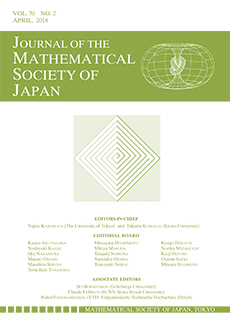Abstract
The classical Jacobi formula for the elliptic integrals (Gesammelte Werke I, p. 235) shows a relation between Jacobi theta constants and periods of ellptic curves . In other words, this formula says that the modular form with respect to the principal congruence subgroup of has an expression by the Gauss hypergeometric function via the inverse of the period map for the family of elliptic curves (see Theorem 1.1). In this article we show a variant of this formula for the family of Picard curves , those are of genus three with two complex parameters. Our result is a two dimensional analogy of this context. The inverse of the period map for is established in [S] and our modular form (for the definition, see (2.7)) is defined on a two dimensional complex ball , that can be realized as a Shimura variety in the Siegel upper half space of degree 3 by a modular embedding. Our main theorem says that our theta constant is expressed in terms of the Appell hypergeometric function .
Citation
Keiji MATSUMOTO. Hironori SHIGA. "A variant of Jacobi type formula for Picard curves." J. Math. Soc. Japan 62 (1) 305 - 319, January, 2010. https://doi.org/10.2969/jmsj/06210305
Information





